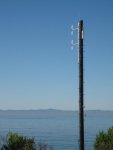You're partially correct.Class 1 refers to a certain class of railroads by the FRA standards. SMART is a CLASS 1 PASSENGER railroad.
The NWP and CFNR (G&W) are Class 3 Railroads.
Regards,
-Frank C.
Class 1 refers to a certain class of railroads set by certain standards. To achieve a class 1 status, a railroad must currently have in excess of $452,000,000 in revenue annually.
Standards set by the FRA make operating a class 1 railroad extremely expensive, and most small railroads don't want that status.
Since regular service just recently began, it is impossible for them to be a class 1 railroad.
Sent from my Pixel XL using Tapatalk



